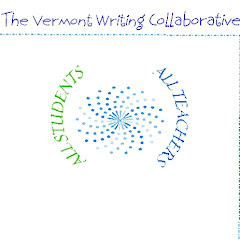CENTRAL IDEAS
Content: Special places influence who we are as people, and can impact our lives in a positive way.
Reading: Demonstrate initial understanding of author’s craft used in literary text by identifying literary devices (imagery, metaphor, personification, hyperbole).
Writing: -Students will demonstrate an understanding of correct paragraph form and writing structure.
-Students will develop descriptive and sensory detail.
Focusing Question
How has your special place had a positive effect/impact on your life? Focus (answer to focusing question)
Because of the ________________, ____________, and ____________, (my special place) has a positive impact on my life.
Building Content Knowledge, Understanding of Writer’s Craft
• craft lessons (intro, transitions, conclusions, etc) Read and discuss examples of special places in literature and articles-find-ask librarian to locate, suggest
Vocabulary-positive, effect (Frayer model)
Guided reading and conversation
Structures
Essay map
Teacher essay model-drafts, map
Student models of intros, body paragraphs, conclusion
Painted essay approach-do with teacher model and author examples, when appropriate
Writing / Revising
Write a CR for one of the example texts: explain two ways that the author’s special place positively influenced their life. (focus: (The place) has a positive effect on (the author’s).-Write with a partner
Fill out essay map-teacher and students check/orally share. “Read” essay to partners using the map. Put 2 post-its of new ideas from others.
Write essay independently-share parts of student essays as they draft
Revise-share with pairs, class
Lesson Sequence
-Share objectives for assignment-essay writing, creating a sharing community -Encourage students to begin thinking about their place
-Read and discuss author examples
-Highlight evidence of positive impact
-Highlight sensory and/or descriptive details
-Write CR for one of the examples
-Share teacher model of CR written about one of the examples
-Analyze using BAMS Writing Rubric
-Share teacher example of “Special Place” essay-paint it-do as a pairs and class
Students draw their place-describe what they drew to others (pairs, groups, class
-Sensory details organizer
-Fill in Essay map
-Each student develops focus question for feed back when reading to others
-“read” essay map to others for oral practice-apply sticky notes with suggestions from each partner
-Write focus statement
-Write intro
-write body paragraphs
-write conclusion
-revision is done throughout
This is another part of the assignment, the bulk of which is done at home:
Artistic Representation of Your Special Place: You are responsible for creating an artistic representation of your special place. It is required that you submit a draft or plan of your idea. Include the size of it, and the materials you plan to use.
Some ideas that you may want to consider:
• photo collage
This could be done on tag board, foam core, or any other firm surface. Whatever you use, you should fill the entire space. Do not use a huge piece of board and only cover a little of it.
• shadow box (diorama)
-Along with the diorama, you should type a 1-2 paragraph explanation of what you have represented in the box. What is the view? Where is the location? How do you feel when you are here? Why did you choose to use a diorama as your artistic representation?
-must be detailed and filled with items. The more of the items created by you, the better it will be. You can use clay, cloth, paper, markers, wood, paint, etc. to create items.
• painting
-Along with the painting, you should type a 1-2 paragraph explanation of what you have painted. What is the view? Where is the location? Why did you choose to paint this view or location? How do you feel when you are here? Why did you choose to use a painting as your artistic representation?
• computer slideshow with music (3-5 minutes). This will be presented to the class.
• power point presentation (to the class) with photos (3-5 minutes)
• documentary film (3-5 minutes) to be viewed by the class. Mr. Lonergan needs to see a written plan/story board before filming takes place.
• drawing
-at least 9” x 12” on white paper (no notebook paper)
-inclusion of lots of details is important.
-neat
-very colorful
-draw large enough, and use the space so that details can be seen
• If you need ideas, or help with supplies, please talk to Mr. Lonergan.

(posted by Joey, but written by Rebekah Thomas)
ReplyDeleteMichael,
I think it's great that you are planning to do this with your students. We often don't spend enough time looking at the importance of setting when discussing literature, so this will be an excellent connection. I wonder if you'd consider posting the texts/eamples that you end up using, as I think this could be a valuable resource.
Since writing is often difficult for many students, I think it's so important that we have writing sequences such as yours where students can
write about what they know and what they are personally invested in. I think that by
doing this in sections, as you have, and allowing students to work in groups and partnerships will make the writing seem very manageable. I
really like how you tied the visual arts into this lesson sequence. The choices that
you've provided are excellent and I think will be really powerful for students to tie into their written pieces.
You've incorporated the scaffolds necessary for your students to be successful, have tied in the visual arts as well as technology, and have
provided ample opportunities for them to share (and practice their public speaking).
Thank you for sharing this lesson sequence.